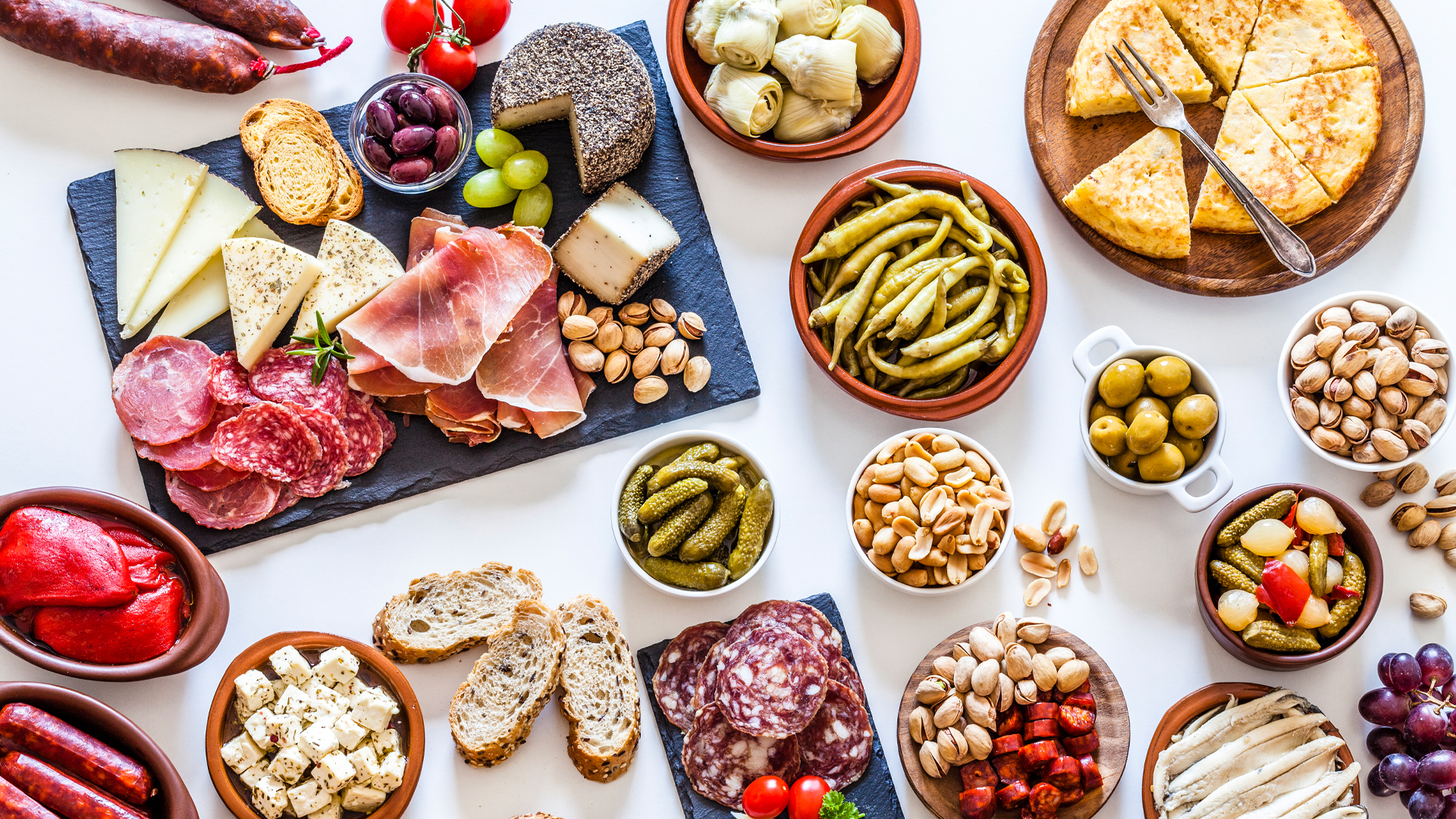We don’t call it charcuterie
Antipasto, or "before the meal," is the course that signals the start of an Italian feast. Antipasti, plural, refers to a spread of Italian snacks, and appetizers to stimulate the appetite. Whether you slice, dice, drape or arrange antipasti- on a platter or buffet style, you want to make them as colorful, enticing, and charming as the Italian restaurant owner who makes his way to your table, asking for your mother by name. We've compiled an A.N.T.I.P.A.S.T.O. Guide for your next get-together to help you build a spread that will knock your “calzini” off.
"A" IS FOR APERTIVO
These traditionally herbaceous libations (think Campari and soda, negroni, and Aperol spritz) set the welcoming, convivial tone of enjoying antipasti with friends. They're light on alcohol, and they are the perfect companion to a wide range of flavors, from salty snacks to cured meats and rich cheeses. Classic aperitivi are easy to concoct at home, but the bright, light bubbles of a bottle of Prosecco or dry, effervescent Lambrusco do the trick too!
"N" IS FOR NUTS
Walnuts, pistachios, and hazelnuts are antipasto must-haves for their crunch. Along with hunks of rustic bread, taralli, and grissini, they are an essential savory component to an antipasti platter or spread.
"T" IS FOR TOMATOES
A bowl of freshly chopped tomatoes in their prime, topped with sea salt flakes and drizzles of excellent quality, cold-pressed olive oil offers gorgeous simplicity and much-needed acidity to balance rich and salty salumi e formaggi (meats and cheese).
"I" IS FOR INVOLTINI
Experiment with involtini. These “rolls" are slices of meat, vegetables, cheese, or fish wrapped around a filling to make little bundles or packages. They look beautiful, are easy to portion, and each one is a taste sensation since it's two complementary flavors in one bite - you can dream up any number of seasonal pairings, from spring asparagus wrapped with cured meat to heartier appetizers, such as baked involtini di melanzane— thin slices of eggplant filled with ricotta.
"P" IS FOR PRESENTATION
For a buffet-style antipasto, setting out a variety of small bowls, boards, mix and match grandma-style plates, and funky, colorful vessels will reflect your sense of style and help to create a homey, warm vibe. The more diverse the vessels are in height, depth, and size, the better to showcase your offerings. Arrange a mouthwatering selection of antipasti on a platter and park them in the center of the table to get your meal underway. Place bright roasted peppers, deep green olives, or other colorful items in the center of the platter, so the color pops!
"A" IS FOR ABBONDANZA
Abbondanza is the feeling of warmth and generosity that is the hallmark of Italian cooking and entertaining. You can capture a feeling of abundance by rounding out a simple selection of olives, nuts, and cured meat and cheese by adding a dish with rustic beauty and heft, such as grilled polenta, frittata wedges, homemade focaccia, or mini pizzas.
"S" IS FOR SEASONALITY
Seasonal vegetables and fruits add earthy notes and contrasting sweetness to your antipasto arrangement. Some favorites are fresh fennel, spicy radishes, and bell peppers. You can also offer marinated mushrooms, roasted peppers, or grilled or marinated eggplant and zucchini. Bunches of grapes, fresh figs, and melons make great accompaniments, or add fruit jams, vegetable spreads, or pickled vegetables, such as giardiniera, for a sour edge.
"T" IS FOR TRAVEL
Draw inspiration from each of Italy's twenty regions, including Sicily and Sardinia, to create an antipasti selection comprised of regional favorites. Pair paper-thin, silky-sweet slices of Prosciutto di Parma with a salty hunk of Parmigiano-Reggiano drizzled with aged Balsamic vinegar from Modena, which is each a specialty produced in Emilia-Romagna. Remember: “If it grows together, it goes together.”
"O" IS FOR OLIVES
Include a mix of Italian olives, such as buttery, salty Castelvetrano, sweet and fruity Taggiasca, briny Sicilian Saracena, or sour Gaeta, to capture a range of flavor profiles- savory, sweet, salty, and sour for your antipasto course.
Theresa Gambacorta
Theresa Gambacorta is a writer and cookbook co-author. Her writing has appeared in such titles as La Cucina Italiana, Spin Magazine, Men's Fitness, Muscle and Fitness, and Centennial's special interest publications. She is the co-author of chef Joey Campanaro's Big Love Cooking (Chronicle, 2020), chef Nasim Alikhani's Sofreh (Knopf, 2023), and the forthcoming vegan cookbook, Eat What Elephants Eat by activist Dominick Thompson (Simon Element, 2024).

